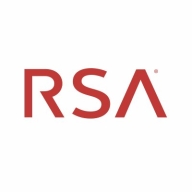

RSA Adaptive Authentication and Microsoft Entra ID compete in the security and identity management category. Microsoft Entra ID has the upper hand due to its integration capabilities and overall value.
What features are offered by RSA Adaptive Authentication in comparison to Microsoft Entra ID?RSA Adaptive Authentication offers advanced fraud detection, a customizable rules engine, and robust security features. Microsoft Entra ID provides seamless integration with other Microsoft products, a broad feature set, and comprehensive integration capabilities across various platforms.
What areas of improvement can be found in RSA Adaptive Authentication in comparison to Microsoft Entra ID?RSA Adaptive Authentication could improve its reporting tools, user experience, and usability enhancements. Microsoft Entra ID needs better documentation, enhanced customer support, and potentially improved customer service quality.
How is the ease of deployment and customer service of RSA Adaptive Authentication in comparison to Microsoft Entra ID?RSA Adaptive Authentication is seen as complex to deploy but has strong customer service support. Microsoft Entra ID is noted for simpler deployment, although its customer service receives mixed reviews.
What setup costs and ROI can be seen with RSA Adaptive Authentication in comparison to Microsoft Entra ID?RSA Adaptive Authentication has higher initial setup costs but delivers a good ROI through its security features. Microsoft Entra ID offers a more competitive pricing model, which provides a better ROI due to its integration capabilities.
| Product | Market Share (%) |
|---|---|
| Microsoft Entra ID | 12.9% |
| RSA Adaptive Authentication | 0.8% |
| Other | 86.3% |

| Company Size | Count |
|---|---|
| Small Business | 80 |
| Midsize Enterprise | 36 |
| Large Enterprise | 132 |
| Company Size | Count |
|---|---|
| Midsize Enterprise | 1 |
| Large Enterprise | 6 |
Microsoft Entra ID is an advanced identity and access management service offering seamless single sign-on, multifactor authentication, and centralized user access across applications, enhancing security and efficiency for organizations transitioning to cloud-based environments.
Recognized for its centralized management, Microsoft Entra ID significantly boosts organizational security by integrating features such as conditional access and identity protection. It supports a wide array of applications, facilitating a secure transition from on-premises to scalable cloud environments. By adopting robust security measures and flexible identity management, organizations can streamline operations and ensure consistent user experiences. However, challenges like confusing licensing costs, outdated documentation, and limited integration with non-Microsoft applications persist. Enhancements in technical support, interface design, and more granular permissions are needed to address these issues effectively.
What are the key features of Microsoft Entra ID?In healthcare, Microsoft Entra ID facilitates secure patient record access and compliance with industry regulations. Financial institutions rely on it for robust security measures in safeguarding client data. In the education sector, it streamlines access to online resources for students and faculty. Global enterprises benefit from its ability to manage complex identity frameworks across multiple regions, ensuring reliable security amidst increasing cyber threats.
We monitor all Authentication Systems reviews to prevent fraudulent reviews and keep review quality high. We do not post reviews by company employees or direct competitors. We validate each review for authenticity via cross-reference with LinkedIn, and personal follow-up with the reviewer when necessary.